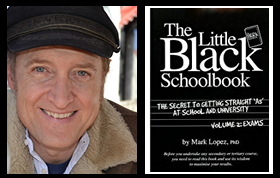Dr Mark’s The Meaning in a Nutshell
Kazuo Ishiguro, Never Let Me Go (2005)
The novel by Kazuo Ishiguro Never Let Me Go (2005) tells the story of a trio of young people (Kathy H, Ruth and Tommy) from their childhood through their teen years and on to their early adulthood, depicting the ebb and flow of their friendships and then the ups and downs of their romantic and sexual relationships.
However, by situating this otherwise quaint and quintessentially human story in a science fiction scenario where the young people are revealed to be clones who were created solely to serve as organ donors for surgeries to save the lives of others, and who are destined to be used in this fashion until they die prematurely, the novel raises bioethical issues related to notions of whether advances in science universally elevate humanity or produce benefits for some and suffering for others. This scenario, which involves the creation of a subclass of humans to be exploited by others, also raises issues about the existence of race-based slavery and how it is normalised, rationalised and justified by an ideology that denies the exploited subclass of humans a recognition that they are fully or truly human and deserving of the rights and quality of life routinely afforded to others.
However, Ishiguro uses this context to share his fascination with the idea that oppressed, exploited people who are decent individuals can create little pockets of happiness where they live, regardless of the oppressive, exploitive system in which they reside or the grim fate allotted to them. In this sense the novel is meant to be uplifting.
The novel is influenced by existentialism in the sense that it puts a time limit on the lives of the main characters and finds them wanting to prioritise friendship and love as what matters to them most in the short time that they have to live. The individuals who are the main characters become aware of their limited lifespan but put a priority on maintaining positive friendships, especially when their inevitable disagreements and misunderstandings need to be resolved to return to a happy equilibrium, and they put a great importance on feeling loved and of having one’s love acknowledged.
The novel also suggests that most people will accept their lot in life even if it is a grim one, so they are unlikely to rebel even if the fate they are compelled to face is onerous and deadly. Here the novel is making broad philosophical statements about human nature and also more specific comments on the experience of slavery and how most slaves accepted their lot in life. Instead of rebellion, they tried to make the most of their situation and find happiness despite their predicament. Most importantly, these oppressed people are depicted in the novel as tending to stay within the rules set by authorities and to only seek benefits that are within the rules or that are rumoured to be within the rules.
The novel also looks at the morality of the parental issue of whether to shield children from upsetting bad news and the evils of the outside world or to be honest with them about this bad news and the evils of the world. The novel wrestles with these and other moral issues from a utilitarian perspective, where what is morally good is understood to be what maximises happiness and minimises pain. If it is the case that the children are protected from emotional pain by shielding them as much as possible from the truth about their grim fate then that can be said to be morally good. But the novel suggests that despite that being the case, it is difficult to feel completely comfortable with that policy. The novel plays with this tension throughout. The character Miss Emily (who runs the Hailsham boarding school) represents the approach of shielding the students from the truth while Miss Lucy (a teacher/guardian at that school) represents the contrary view that the children are better off knowing the truth. The novel does not resolve this debate but leaves the conclusion open to interpretation. It presents most of the children as happy that the school that shielded them gave them fond memories, but presents the character Tommy as having the contrary view and wishing that he had been told the truth.
The story is told in the first person by the main character Kathy H as a sequence of memories that are mostly, but not always, presented in chronological order. Through this format of storytelling, the novel has much to say about the value and nature of memories. It advocates that happiness in life can be appreciated in terms of an accumulation of happy memories, like those that can be acquired during a happy childhood. In passing, the novel also alludes to the problematic nature of memory by showing that it is often difficult to be sure of one’s memories and to be reliant on a sense of truth derived from problematic memories.
In the context of this appreciation of happiness being understood in terms of the accumulation of happy memories, the establishment of the Hailsham boarding school represents an attempt by compassionate authorities to seal off the clone children from the outside world as much as possible so they can be happy and have memories of the world (in microcosm) as a much nicer place than it actually is.
Student resources by Dr Mark Lopez
© Mark Lopez 2019 All RIGHTS RESERVED
The purpose of the concise notes of Dr Mark’s The Meaning in a Nutshell is to provide much needed help to students seeking to unlock the meaning of the texts with which they have to deal. (More elaborate notes are provided in lessons as part of my private tutoring business.) Subject: Never Let Me Go meaning, Never Let Me Go themes, Never Let Me Go analysis, Never Let Me Go notes
